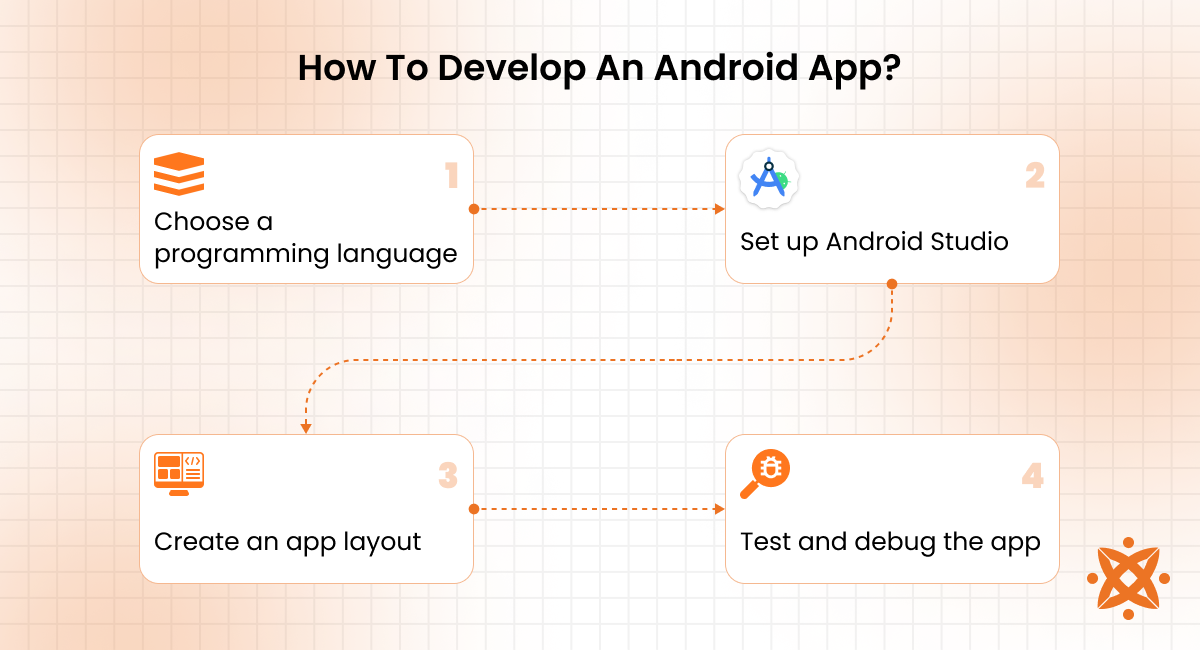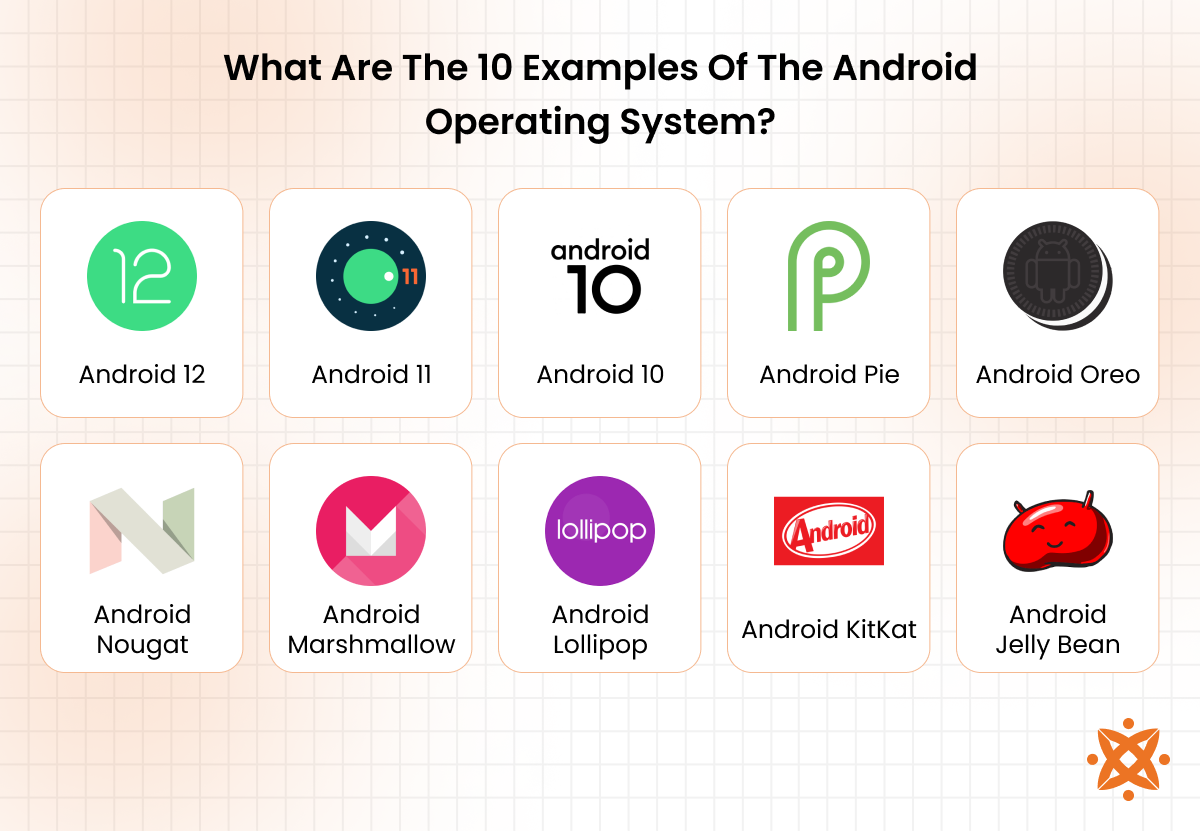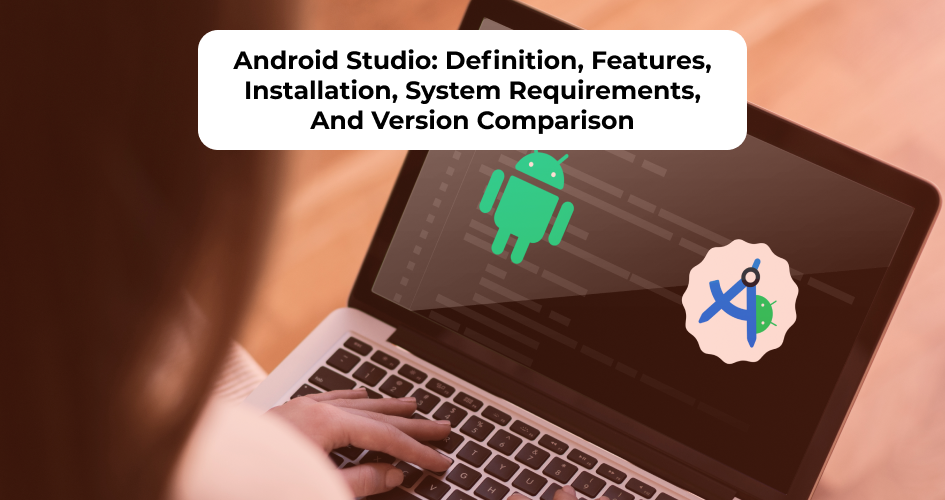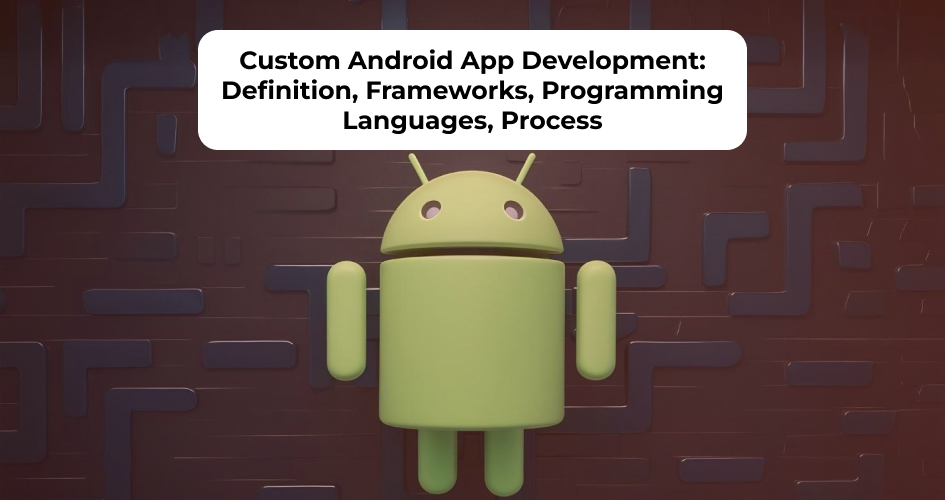The top Android OS alternatives are iOS, GrapheneOS, KaiOS, Sailfish OS, Plasma Mobile/postmarketOS, Ubuntu Touch, Mobian, Tizen OS, CalyxOS, LineageOS, /e/ OS, LuneOS, and PureOS/Librem. These operating systems provide varying degrees of support for cross-platform development, security, and user interface customization, offering options for those who seek an alternative to Android’s dominance.
The top Android OS alternatives are:
- iOS
- GrapheneOS
- KaiOS
- Sailfish OS
- Plasma Mobile / postmarketOS
- Ubuntu Touch
- Mobian
- Tizen OS
- CalyxOS
- LineageOS
- /e/ OS
- LuneOS
- PureOS/Librem
To develop a cross-platform mobile app, developers often use frameworks such as React Native, Flutter, or Xamarin. These frameworks allow them to write a single codebase that runs on both Android and iOS platforms. These tools simplify app development by enabling developers to reach a wider audience while maintaining native-like performance on both operating systems.
According to Statista’s “Mobile Operating System Market Share Worldwide” (2024), Android remains the most popular OS, holding 71.93% of the global market. The use of Android OS alternatives has been growing steadily, with privacy-focused platforms like GrapheneOS and LineageOS gaining more attention from tech-savvy users and developers.
iOS
iOS is Apple’s proprietary mobile operating system designed for iPhones, iPads, and iPods. It is known for its user-friendly interface, strong ecosystem integration, and exclusive features like iMessage and FaceTime. iOS is closed-source, with regular updates directly from Apple, providing a smooth and secure experience across all supported devices.
Key features include seamless integration with other Apple products, enhanced privacy controls, a well-curated App Store, and consistent performance. Its strong focus on security and premium hardware makes iOS a viable alternative to Android OS for users seeking reliability and a smooth user experience.
Pros of iOS:
- iOS provides high-level security and privacy controls, ensuring a safe user experience.
- iOS’s seamless integration with Apple’s ecosystem allows users to connect their devices and services easily.
- iOS receives regular updates, ensuring consistent performance and timely access to new features.
Cons of iOS:
- iOS offers limited customization options when compared to Android, restricting user personalization.
- The closed-source nature of iOS restricts developer flexibility and access to the underlying system.
- The cost of Apple devices is generally higher compared to many Android alternatives.
GrapheneOS
GrapheneOS is an open-source mobile operating system built on the Android Open Source Project (AOSP), designed for high security and privacy. It focuses on providing a hardened, secure environment with advanced security features, making it a top choice for users who prioritize privacy and data protection. GrapheneOS is known for its minimalistic approach and lack of Google services, which enhances its security and privacy capabilities.
Key features include a strong focus on data encryption, advanced privacy settings, and regular security updates. GrapheneOS also supports a secure app sandbox and has a reputation for ensuring user data is not collected or shared without consent, making it a noteworthy alternative to Android for privacy-conscious individuals.
Pros of GrapheneOS:
- GrapheneOS offers advanced security features, including full disk encryption and robust app sandboxing.
- The operating system is open-source, allowing full transparency and control over the code.
- It does not include Google services, which enhance privacy by preventing data collection.
Cons of GrapheneOS:
- The lack of Google services limits access to popular apps and services, making it less user-friendly.
- GrapheneOS is not as widely supported by hardware, limiting device compatibility.
- The user interface is more minimalist and less polished compared to other mainstream operating systems like iOS and Android.
KaiOS
KaiOS is a lightweight mobile operating system based on Linux and developed for feature phones and IoT devices. It is designed to bring smartphone-like functionality to low-cost, resource-limited devices, offering vital features such as apps, internet browsing, and media playback. KaiOS supports popular apps like WhatsApp, Facebook, and YouTube, bridging the gap between basic phones and smartphones.
Key features include its support for 4G, Wi-Fi, GPS, and popular web apps. With its focus on minimalism and efficiency, KaiOS provides a simple user interface and a smooth experience for users who do not require high-end smartphone capabilities but still want to access vital apps and services.
Pros of KaiOS:
- KaiOS runs efficiently on low-end hardware, making it accessible to users with limited budgets.
- It supports 4G connectivity and popular apps, providing smartphone-like functionality at a lower cost.
- The lightweight system is optimized for longer battery life, making it ideal for feature phones.
Cons of KaiOS:
- The limited app selection compared to Android and iOS is restrictive for users seeking more diverse functionality.
- KaiOS lacks the rich customization options and developer tools available in more robust operating systems.
- The user interface is basic, which is outdated for those used to more advanced smartphones.
Sailfish OS
Sailfish OS is a Linux-based mobile operating system developed by the Finnish company Jolla. It is known for its unique gesture-based user interface and emphasis on privacy and open-source principles. Sailfish OS offers a seamless user experience while supporting Android apps via a compatibility layer, making it an appealing alternative for users who want a mix of both native and Android app capabilities.
Key features of Sailfish OS include its multitasking interface, robust privacy controls, and access to the Sailfish OS app store. It supports Android apps, allowing users to install a wide variety of apps, though the experience might not be as seamless as on native Android devices.
Pros of Sailfish OS:
- Sailfish OS offers a unique and intuitive gesture-based interface, providing a smooth and innovative user experience.
- The operating system is open-source, giving developers and users control over the software.
- Sailfish OS supports Android apps, enabling users to enjoy a broader app selection despite being on an alternative OS.
Cons of Sailfish OS:
- The ecosystem and app availability are much smaller compared to Android and iOS, limiting user options.
- While it supports Android apps, the experience is not as smooth as on a native Android device.
- Sailfish OS is only officially supported on specific devices, limiting hardware compatibility.
Plasma Mobile / postmarketOS
Plasma Mobile is an open-source mobile operating system based on the KDE Plasma desktop environment, while postmarketOS is a Linux-based operating system optimized for mobile devices. Both are designed for users who prioritize privacy, security, and customizability. Plasma Mobile offers a highly customizable interface, while postmarketOS focuses on providing long-term support for older devices by turning them into Linux-powered smartphones.
Key features of Plasma Mobile include its integration with the KDE ecosystem, flexible user interface, and the ability to run a variety of Linux applications. PostmarketOS, on the other hand, provides an excellent option for repurposing old smartphones by offering a lightweight system that extends the lifespan of older hardware while reducing bloat and unnecessary features.
Pros of Plasma Mobile / postmarketOS:
- Plasma Mobile provides a highly customizable user interface, appealing to advanced users who want more control.
- postmarketOS extends the life of older smartphones, making it a great choice for users with legacy devices.
- Both operating systems are open-source, giving users and developers the flexibility to modify and contribute to the software.
Cons of Plasma Mobile / postmarketOS:
- The app ecosystem is limited compared to Android and iOS, which hinders usability for mainstream users.
- Both operating systems are still in active development and lack certain features and stability expected from established mobile OSes.
- Plasma Mobile is supported on only a small number of devices, and postmarketOS requires technical expertise for installation and use.
Ubuntu Touch
Ubuntu Touch is a mobile operating system developed by UBports, based on the Linux distribution Ubuntu. Designed for smartphones and tablets, it aims to offer a convergence experience, meaning the same system is used across both mobile and desktop environments. Ubuntu Touch is known for its open-source nature, providing users with the ability to control and modify the operating system to their needs, while also focusing on security and privacy.
Key features of Ubuntu Touch include its clean and minimalistic user interface, extensive customization options, and its support for both native and web-based apps. The system is built to work with a range of devices. It provides a more desktop-like experience on mobile, including the ability to run desktop applications when connected to a larger display.
Pros of Ubuntu Touch:
- Ubuntu Touch provides a unique convergence experience, enabling users to switch seamlessly between mobile and desktop computing.
- It is an open-source operating system, offering transparency and the flexibility for customization.
- Ubuntu Touch focuses on privacy and security, making it ideal for privacy-conscious users.
Cons of Ubuntu Touch:
- The app ecosystem is still small, with fewer available apps compared to Android and iOS, limiting functionality.
- Ubuntu Touch is supported on a limited number of devices, making it less accessible to a broader user base.
- The user interface feels unfamiliar to those accustomed to Android or iOS, requiring an adjustment period.
Mobian
Mobian is a Debian-based mobile operating system designed for smartphones. It focuses on privacy, simplicity, and open-source principles. It uses the GNOME desktop environment adapted for mobile devices, providing a consistent and familiar interface for Linux users. Mobian is designed to run on a variety of smartphones, allowing users to repurpose older hardware while maintaining a lightweight and secure OS.
Key features of Mobian include its full integration with Debian’s vast repositories, providing access to a wide range of software. It also offers a straightforward, clean user interface and strong privacy features, making it an appealing choice for Linux enthusiasts. Mobian is still in active development, and its user experience continues to improve as the project matures.
Pros of Mobian:
- Mobian is fully open-source and integrates well with the Debian ecosystem, offering access to a broad range of applications.
- The operating system is lightweight, providing a smooth experience on lower-spec hardware.
- Mobian prioritizes privacy, with a commitment to not collecting unnecessary user data.
Cons of Mobian:
- The app ecosystem is limited compared to more mainstream mobile OSes like Android and iOS.
- Mobian is still under development, meaning it lacks stability and features found in other mobile operating systems.
- Device support is limited, with the system being compatible only with specific models, restricting its accessibility.
Tizen OS
Tizen OS is a Linux-based open-source operating system developed by Samsung. It is primarily designed for use in smartwatches, smart TVs, and other IoT devices. Tizen also runs on smartphones, although its market penetration is lower than that of Android or iOS. It offers a lightweight, fast experience with an emphasis on security and performance, particularly for Samsung’s own devices.
Key features of Tizen OS include its support for HTML5 apps, a smooth user interface, and integration with other Samsung services and devices. It provides a consistent experience across various device categories, from wearables to home appliances. While Tizen is mostly used in non-phone devices, it remains a viable alternative to Android on smartphones, offering unique features for Samsung’s ecosystem.
Pros of Tizen OS:
- Tizen OS is lightweight and offers fast performance, making it ideal for devices with lower hardware specifications.
- It integrates seamlessly with other Samsung devices and services, providing a unified ecosystem experience.
- The operating system is open-source, offering transparency and the opportunity for customization by developers.
Cons of Tizen OS:
- Tizen’s app ecosystem is smaller than that of Android or iOS, limiting the number of available apps.
- It is mostly limited to Samsung devices, restricting its availability across a wider range of smartphones.
- Tizen OS lacks the support and popularity of Android, making it less attractive for mainstream users.
CalyxOS
CalyxOS is an open-source, privacy-focused mobile operating system based on Android, with additional security and privacy enhancements. It is designed for users who want a secure mobile experience without compromising on functionality. CalyxOS replaces proprietary Google services with open-source alternatives and offers a clean, minimal interface that focuses on user privacy and control over data.
Key features of CalyxOS include the use of the open-source F-Droid store for apps, encrypted communication tools, and a hardened version of the Android OS to reduce vulnerabilities. It also supports secure features like the Tor network for anonymous browsing and optional encryption for all communications. CalyxOS is ideal for users who prioritize privacy and want to minimize data collection by third parties.
Pros of CalyxOS:
- CalyxOS offers strong privacy protections by removing Google services and integrating open-source alternatives.
- The operating system is designed to be user-friendly while maintaining high levels of security and encryption.
- It supports secure browsing via Tor, ensuring anonymity online.
Cons of CalyxOS:
- The app ecosystem is limited, as it does not include the Google Play Store, limiting app availability.
- CalyxOS requires certain technical knowledge to install and use, which deters less tech-savvy users.
- It is only officially supported on specific devices, reducing its compatibility with a wider range of smartphones.
LineageOS
LineageOS is an open-source mobile operating system based on the Android Open Source Project (AOSP). It is known for providing a clean, bloat-free version of Android with additional customization options. It is a popular choice among Android enthusiasts who prefer a stock Android experience with extended features and better performance than the manufacturer-provided firmware.
Key features of LineageOS include extended customizability, the ability to remove bloatware, and a minimal user interface that resembles stock Android. The OS supports a wide range of Android devices and is regularly updated with security patches, making it a reliable choice for users seeking a near-vanilla Android experience with added performance optimizations.
Pros of LineageOS:
- LineageOS provides a stock Android experience with minimal bloat, ensuring better performance and a clean user interface.
- The OS is open-source, with regular updates and a vibrant community of developers contributing to its evolution.
- It offers enhanced privacy and customization options, such as granular control over app permissions and settings.
Cons of LineageOS:
- LineageOS requires technical knowledge to install and use, which is challenging for novice users.
- The app ecosystem is still tied to Google services, though it is minimized by using alternative app stores.
- It is not officially supported by all device manufacturers, limiting compatibility with some smartphones.
/e/ OS
/e/ OS is an open-source mobile operating system designed to provide privacy and security while reducing reliance on Google services. Built on the Android Open Source Project (AOSP), /e/ OS replaces Google’s proprietary apps with privacy-focused alternatives. It is particularly popular among users who want to de-Google their devices without sacrificing the core Android experience, offering an environment that prioritizes data protection.
Key features of /e/ OS include its focus on privacy, with tools for tracking and blocking ads, and its built-in /e/ Apps store, which provides open-source alternatives to common apps. It also comes with integrated cloud services that are privacy-respecting, enabling users to store data securely while avoiding Google’s data collection practices. /e/ OS offers users the flexibility of Android with enhanced security and control over their data.
Pros of /e/ OS:
- /e/ OS offers a privacy-first experience by removing Google services and using privacy-focused apps and cloud services.
- The operating system is open-source, providing transparency and control over the software.
- It retains many of Android’s functionalities, ensuring a smooth transition for users familiar with Android devices.
Cons of /e/ OS:
- The app ecosystem is limited due to the absence of Google Play Services, making it harder to access popular apps.
- /e/ OS requires some technical knowledge to install and use effectively, especially for non-technical users.
- Device compatibility is limited, as /e/ OS is supported on a select list of phones.
LuneOS
LuneOS is an open-source mobile operating system developed as the continuation of the webOS project, which Palm created and later acquired by HP. It focuses on providing a fast, secure, and simple user experience with a modern user interface. LuneOS is particularly popular among those who enjoy webOS’s gesture-based navigation system and wish to bring it to modern hardware.
Key features of LuneOS include its gesture-driven interface, open-source development, and focus on privacy and simplicity. Although it is not widely used, LuneOS provides a unique, lightweight mobile experience with an emphasis on quick app access and multitasking. It also offers support for modern web technologies and APIs, making it suitable for developers looking to build lightweight mobile apps.
Pros of LuneOS:
- LuneOS provides a clean, simple, and intuitive gesture-based interface, appealing to users who prefer minimalism.
- As an open-source operating system, it offers transparency and customization options for advanced users and developers.
- LuneOS emphasizes security and privacy, providing users with greater control over their data.
Cons of LuneOS:
- The app ecosystem is very limited, with few apps available for download, making it less versatile than Android or iOS.
- LuneOS is not officially supported on a wide range of devices, restricting its accessibility.
- The operating system is still in development, and users encounter stability issues or a lack of features compared to more mainstream options.
PureOS/Librem
PureOS is an open-source, privacy-focused mobile operating system developed by Purism for use on its Librem line of smartphones. It is based on Debian Linux and designed to prioritize user privacy and security, with a strong emphasis on free and open-source software. PureOS comes with tools for securing communications and blocking online tracking, making it an ideal alternative for users who prioritize data privacy.
Key features of PureOS include its commitment to free software principles, integration of privacy-focused apps, and its secure boot process that prevents unauthorized access to the system. It also offers a range of tools designed to help users maintain their privacy, including a secure web browser, encrypted messaging apps, and privacy controls that restrict data collection.
Pros of PureOS/Librem:
- PureOS offers a strong focus on privacy and security, with features like encrypted communications and anti-tracking tools.
- The operating system is open-source, providing transparency and flexibility for users who want control over their software.
- PureOS is built on Debian, providing stability and access to a wide range of Linux applications.
Cons of PureOS/Librem:
- The app ecosystem is limited compared to Android and iOS, reducing the overall functionality for mainstream users.
- PureOS is only officially supported on Purism’s Librem devices, restricting its hardware compatibility.
- The learning curve and technical knowledge required to install and use PureOS are a barrier for non-technical users.
How To Develop An Android App?
To develop an Android mobile app, you need the right tools and programming languages, such as Java or Kotlin, along with an Integrated Development Environment (IDE) like Android Studio. You also need to understand the Android SDK and the process of testing and debugging your app to ensure a smooth user experience.
According to Google, titled “Building Android Apps: Getting Started,” published in the Android Developer Guide (2024), Android Studio is the official IDE for Android development, offering tools for coding, testing, and debugging. The guide emphasizes the importance of Java and Kotlin as primary languages for developing an Android app and the integration of Google services for a seamless experience.
To develop an Android mobile app, the steps to follow are:
- Choose a programming language: The main languages for Android app development are Java and Kotlin. Java is the traditional language, while Kotlin is now preferred for new projects due to its concise syntax and built-in safety features.
- Set up Android Studio: Android Studio is the official IDE for Android development. It provides all the necessary tools to design, code, and debug your app efficiently.
- Create an app layout: Designing a user-friendly interface is important. Use Android Studio’s layout editor to drag and drop UI elements and customize them according to your app’s needs.
- Test and debug the app: Use Android Studio’s built-in emulator and real device testing to ensure your app functions correctly. Debugging tools help identify and fix issues in the code.
What Are The Key Considerations For Developing Apps On Android Os Alternatives?
The key considerations for developing apps on Android OS alternatives include compatibility, user experience, performance optimization, and security. Each alternative OS presents unique challenges and opportunities, so developers must carefully evaluate the trade-offs involved in using these platforms.
The key considerations for developing apps on Android OS alternatives are:
- Compatibility with devices: Some Android alternatives have limited device support. Developers must ensure that their app is compatible with the hardware of the target devices, as some alternative OS platforms are only supported on specific models.
- App availability and ecosystem: Many Android alternatives have smaller app ecosystems. Developers need to consider the availability of required apps and libraries and the potential difficulty of attracting users to a smaller app store.
- Security and privacy concerns: Android alternatives often emphasize security and privacy. Developers must understand the OS’s built-in privacy features, such as data encryption and app sandboxing, to ensure that their apps meet the platform’s security standards.
- User interface design: Since many Android alternatives have unique user interfaces, developers should focus on creating intuitive and familiar designs. This ensures that users easily navigate and interact with apps without a steep learning curve.
Is Android Open Source?
Yes, Android is open source. Android is based on the Android Open Source Project (AOSP), which allows developers to access and modify the source code freely. This open-source nature promotes innovation and customization, enabling manufacturers and developers to tailor the operating system to their specific needs.
The open-source license allows anyone to contribute to the development of Android. Still, it is important to note that Google adds proprietary components, such as the Play Store and certain apps, that are not part of AOSP. According to the Open Source Initiative (OSI), the AOSP license is a permissive open-source license, which means that anyone can use, modify, and distribute the source code as long as they comply with the license terms.
Is Android Linux-based?
Yes, Android is Linux-based. It uses the Linux kernel, which serves as the core of the operating system and handles system-level functions such as memory management, process scheduling, and hardware interaction. The Linux kernel provides Android with a stable, secure, and efficient foundation, allowing it to run on a wide range of devices, from smartphones to tablets and IoT devices.
According to the Linux Foundation (2024), the Android operating system’s use of the Linux kernel enables it to inherit Linux’s well-established stability and security features, while also allowing for custom modifications to meet the needs of various manufacturers and device types.
What Are The 10 Examples Of The Android Operating System?
The popular 10 examples of the Android operating system are Android 12, Android 11, Android 10, Android Pie (Android 9), Android Oreo (Android 8), Android Nougat (Android 7), Android Marshmallow (Android 6), Android Lollipop (Android 5), Android KitKat (Android 4.4), and Android Jelly Bean (Android 4.1–4.3).
These versions represent the evolution of Android over the years, each bringing new features, security improvements, and performance enhancements.
The popular 10 examples of the Android operating system are:
- Android 12: Introduced Material You for more personalized UI customization. Added enhanced privacy features like Privacy Dashboard and mic/camera indicators. Offered quicker access to Google features through the new Quick Settings panel.
- Android 11: Focused on improving communication tools like chat bubbles and in-message replies. Introduced one-time permissions for sensitive data access. Included features for better 5G connectivity and media controls.
- Android 10: It introduced a system-wide dark mode and more intuitive gestures. It also improved privacy controls, including location permission updates, and enhanced biometric authentication and security patching mechanisms.
- Android Pie (Android 9): Introduced gesture navigation and AI-driven features like adaptive brightness. Brought more efficient power management and better background app control. Included digital wellbeing tools to track and limit screen time.
- Android Oreo (Android 8): This version introduced notification dots and picture-in-picture mode. It also enhanced app performance and battery management with background limits. Autofill for passwords and an improved security patch system were also included.
- Android Nougat (Android 7): Brought split-screen multitasking and improved notifications. Enhanced system performance and security with file-based encryption. Offers better app optimizations, especially for multitasking apps.
- Android Marshmallow (Android 6): We introduced Doze mode for improved battery life, added granular permissions for better control over app access, and Enhanced Google Now features with voice search improvements.
- Android Lollipop (Android 5): Brought a fresh new Material Design UI for a more cohesive visual experience. Enhanced multitasking with a more intuitive interface for apps. Introduced 64-bit support and improved device encryption.
- Android KitKat (Android 4.4): This version is optimized for lower-end devices, making it more accessible. It includes a full-screen immersive mode for apps and games, introduces Google Now integration, and improves system stability.
- Android Jelly Bean (Android 4.1–4.3): Improved system responsiveness with Project Butter for smoother animations. Added Google Now, improving voice recognition and search, introduced multiple user accounts, and better notification management.
How Are Desktop And Mobile Operating Systems Similar?
Desktop and mobile operating systems are primarily similar in their fundamental purpose of managing hardware resources, running applications, and providing a user interface for interaction. Both rely on a kernel to handle tasks like memory management, process scheduling, and system security. They aim to offer a smooth and consistent user experience and support multitasking, security, and customization features.
While desktop operating systems like Windows and macOS are designed for more powerful hardware and complex tasks, mobile operating systems like Android and iOS prioritize efficiency and battery life. Both support a wide range of apps, have security measures like encryption, and receive regular updates to enhance performance and address vulnerabilities.






